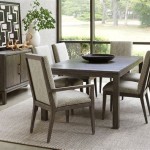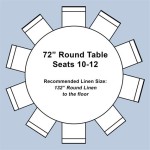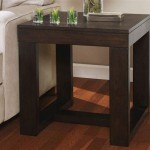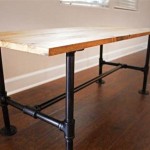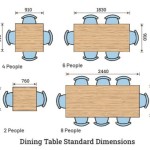Lift Top Coffee Table Reclaimed Wood: A Functional and Sustainable Centerpiece
The lift top coffee table has evolved from a simple surface for beverages to a versatile and functional piece of furniture in modern homes. Integrating reclaimed wood into this design elevates it further, combining practicality with environmental consciousness and unique aesthetic appeal. This type of coffee table offers a flexible workspace, dining surface, or storage solution, all while showcasing the beauty and character of repurposed materials. This article delves into the features, benefits, considerations, and styles associated with lift top coffee tables crafted from reclaimed wood.
Reclaimed wood, also known as salvaged wood or recycled wood, originates from diverse sources such as old barns, factories, warehouses, and even deconstructed homes. These materials are carefully sourced, processed, and transformed into new furniture pieces. The inherent appeal of reclaimed wood lies in its history and distinctive markings. Nail holes, saw marks, and weathering patterns tell a story of the wood's previous life, lending a unique character and patina that cannot be replicated with new wood.
A lift top mechanism enhances the functionality of the reclaimed wood coffee table. This mechanism allows the tabletop to be raised to a more comfortable height for working, eating, or other activities, eliminating the need to lean forward or strain the back. When not in use, the tabletop can be easily lowered, reverting the table to its traditional coffee table configuration. This dual functionality makes it a particularly appealing option for smaller living spaces where maximizing utility is essential.
Functional Advantages of a Lift Top Design
The primary advantage of a lift top coffee table is its enhanced functionality. The ability to raise the tabletop provides a comfortable workspace for tasks requiring a flat surface, such as using a laptop, writing, or enjoying a meal. This elevated surface reduces strain on the back and neck, promoting better posture. The lift top mechanism is usually designed to be sturdy and reliable, supporting a reasonable amount of weight and ensuring smooth operation. Different types of lift mechanisms exist, ranging from simple hinges to more sophisticated gas-spring assisted systems, each offering varying levels of ease and control.
Beyond its ergonomic benefits, the lift top mechanism often reveals a hidden storage compartment beneath the tabletop. This storage area can be used to conceal clutter, such as remote controls, magazines, blankets, or board games, helping to maintain a neat and organized living space. The combination of a functional surface and hidden storage makes the lift top coffee table a highly practical choice for homeowners seeking to optimize their living spaces.
Furthermore, the lift top coffee table can serve as an impromptu dining surface. In smaller apartments or homes without a dedicated dining area, the raised tabletop can comfortably accommodate one or two people for meals. This eliminates the need to use the sofa or coffee table surface directly, preventing spills and messes. The versatility of the lift top design makes it a valuable addition to any modern living room.
Sustainability and the Appeal of Reclaimed Wood
Choosing reclaimed wood furniture aligns with sustainable living principles. By utilizing reclaimed wood, consumers contribute to reducing deforestation and conserving natural resources. Reclaimed wood diverts materials from landfills, lessening the environmental impact associated with waste disposal. The process of reclaiming and repurposing wood also reduces the energy required to manufacture new furniture, as it eliminates the need for logging, transportation, and processing of virgin timber. This reduces the overall carbon footprint associated with furniture production.
The unique aesthetic of reclaimed wood furniture is another significant draw. The wood's history is evident in its distinctive grain patterns, knots, and imperfections. These characteristics add character and charm to the furniture, making each piece one-of-a-kind. The weathered appearance of reclaimed wood creates a warm and inviting atmosphere, complementing a wide range of interior design styles, from rustic and farmhouse to industrial and contemporary.
The use of reclaimed wood supports local economies and craftsmanship. Many artisans and small businesses specialize in sourcing and transforming reclaimed materials into handcrafted furniture. By purchasing reclaimed wood furniture, consumers support these businesses and contribute to preserving traditional woodworking skills. The emphasis on quality and craftsmanship ensures that these pieces are durable and long-lasting, offering lasting value.
Considerations When Selecting a Reclaimed Wood Lift Top Coffee Table
Several factors should be considered when selecting a lift top coffee table made from reclaimed wood. The size of the table should be proportional to the size of the living room and the surrounding furniture. A table that is too large can overwhelm the space, while a table that is too small may not be functional. Consider the height of the table in relation to the height of the sofa or seating area. When the tabletop is in the lowered position, it should be at a comfortable height for placing drinks or snacks.
The quality of the lift mechanism is another important consideration. Ensure that the mechanism is sturdy, reliable, and easy to operate. Test the mechanism to ensure that it raises and lowers smoothly and that it locks securely in both positions. A well-constructed mechanism will provide years of trouble-free use.
The type of reclaimed wood used in the construction of the table can also influence its appearance and durability. Different species of wood will have different grain patterns, colors, and textures. Consider the overall aesthetic of the living room and choose a wood species that complements the existing décor. Ensure that the wood has been properly treated and sealed to protect it from moisture and damage.
Assess the craftsmanship of the table. Look for solid construction techniques, such as dovetail joints or mortise and tenon joints, which indicate a high level of quality. Check for any imperfections in the finish or assembly, and ensure that the table is level and stable. A well-crafted table will be more durable and long-lasting.
Finally, consider the storage capacity of the table. If storage is a priority, choose a table with a large and easily accessible storage compartment. Ensure that the storage area is well-designed and functional, with sufficient space for storing the desired items. Some tables may also include additional storage features, such as drawers or shelves.
Beyond the functional aspects, considering the sourcing of the reclaimed wood is prudent. Inquire about the origin of the wood and the processes used to reclaim and prepare it for use. This transparency helps ensure that the wood is sourced responsibly and that the furniture aligns with ethical and environmental values.
The compatibility of the table's style with the existing decor is also key. While reclaimed wood possesses inherent character, it's important to ensure that its aesthetic complements the overall design scheme of the room. Whether the room features a modern, rustic, or eclectic style, the coffee table should integrate harmoniously.
Investigating the finish applied to the reclaimed wood is crucial. The finish protects the wood from moisture, scratches, and stains. Consider the type of finish and its durability. Options range from natural oils and waxes to more durable polyurethane coatings. A well-applied finish will maintain the beauty of the reclaimed wood for years to come.
Considering the ease of maintenance is a practical aspect. Reclaimed wood, while durable, may require specific cleaning and care procedures. Inquire about the recommended cleaning products and maintenance routines to keep the table looking its best. This proactive approach will ensure the longevity and beauty of the piece.
The weight capacity of the lift top mechanism and the overall table is another important consideration. Ensure that the table can support the weight of items that will be placed on it, both when the top is lowered and when it is raised. This prevents potential damage to the mechanism or the table itself.
Finally, compare prices from different retailers or artisans. Reclaimed wood furniture can vary in price depending on the type of wood, the size of the table, the complexity of the design, and the craftsmanship involved. By comparing prices, consumers can find a table that fits their budget without compromising on quality or style.

Kaplan Rectangular Reclaimed Wood Lift Top Coffee Table Pottery Barn

Kaplan Reclaimed Wood Lift Top Coffee Table Home By Geneva

Arched Barnwood Coffee Table With Lift Top

Kaplan Rectangular Reclaimed Wood Lift Top Coffee Table Pottery Barn
Reclaimed Wine Barrel Coffee Table With Unique Lift Top

Furniture Of America Anthem 42 L In Reclaimed Barnwood 16 34 H Rectangle Mdf Coffee Table With Lift Top Y 1891c39 The Home Depot

Furniture Of America Karin Wood Lift Top Coffee Table In Reclaimed Barnwood Com

Kaplan Rectangular Reclaimed Wood Lift Top Coffee Table Trunk

Furniture Of America Beah 52 In Reclaimed Barnwood Large Rectangle Wood Coffee Table With Lift Top Y 1996c39 The Home Depot

Lift Top Reclaimed Wood Coffee Table Farmhouse Style


